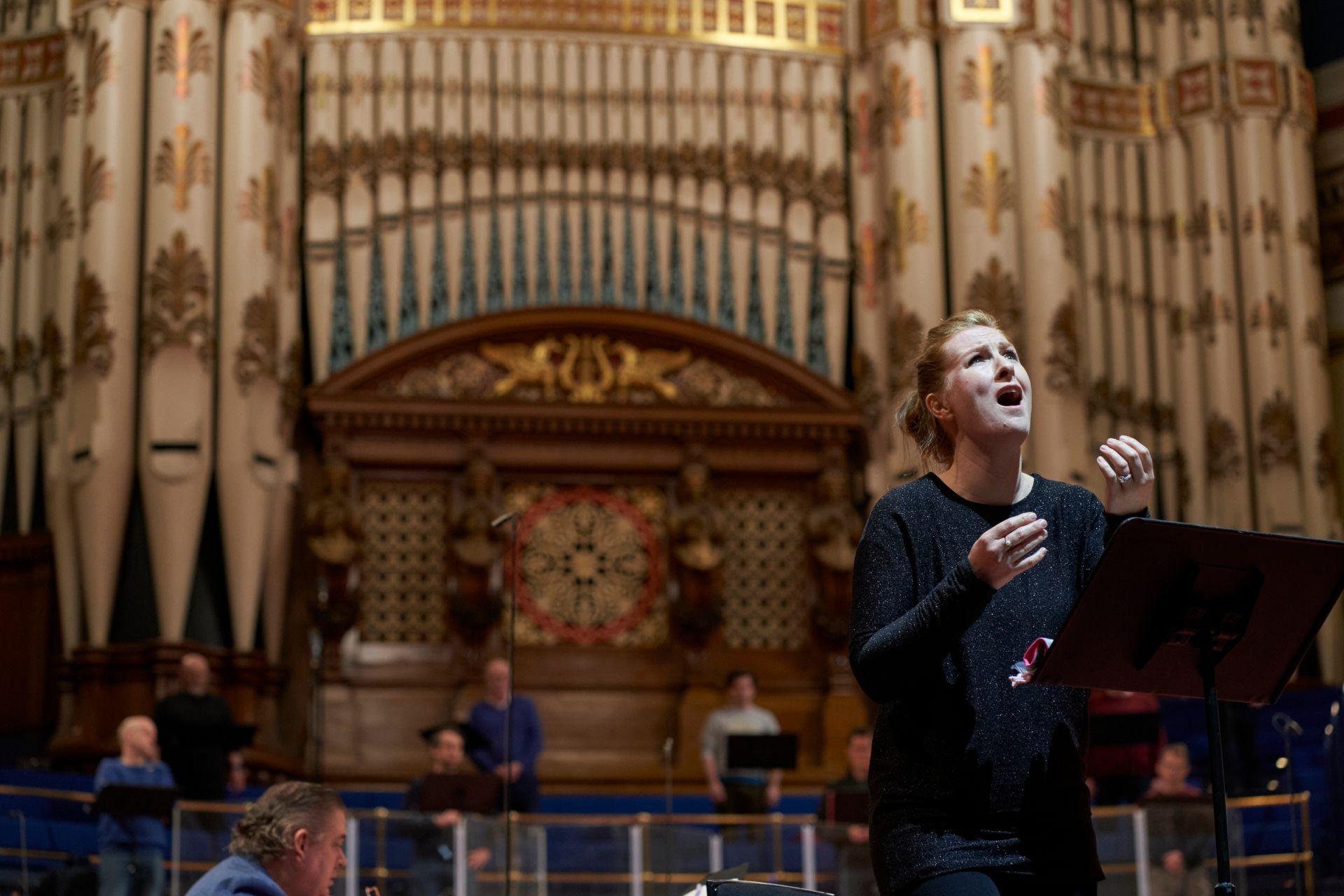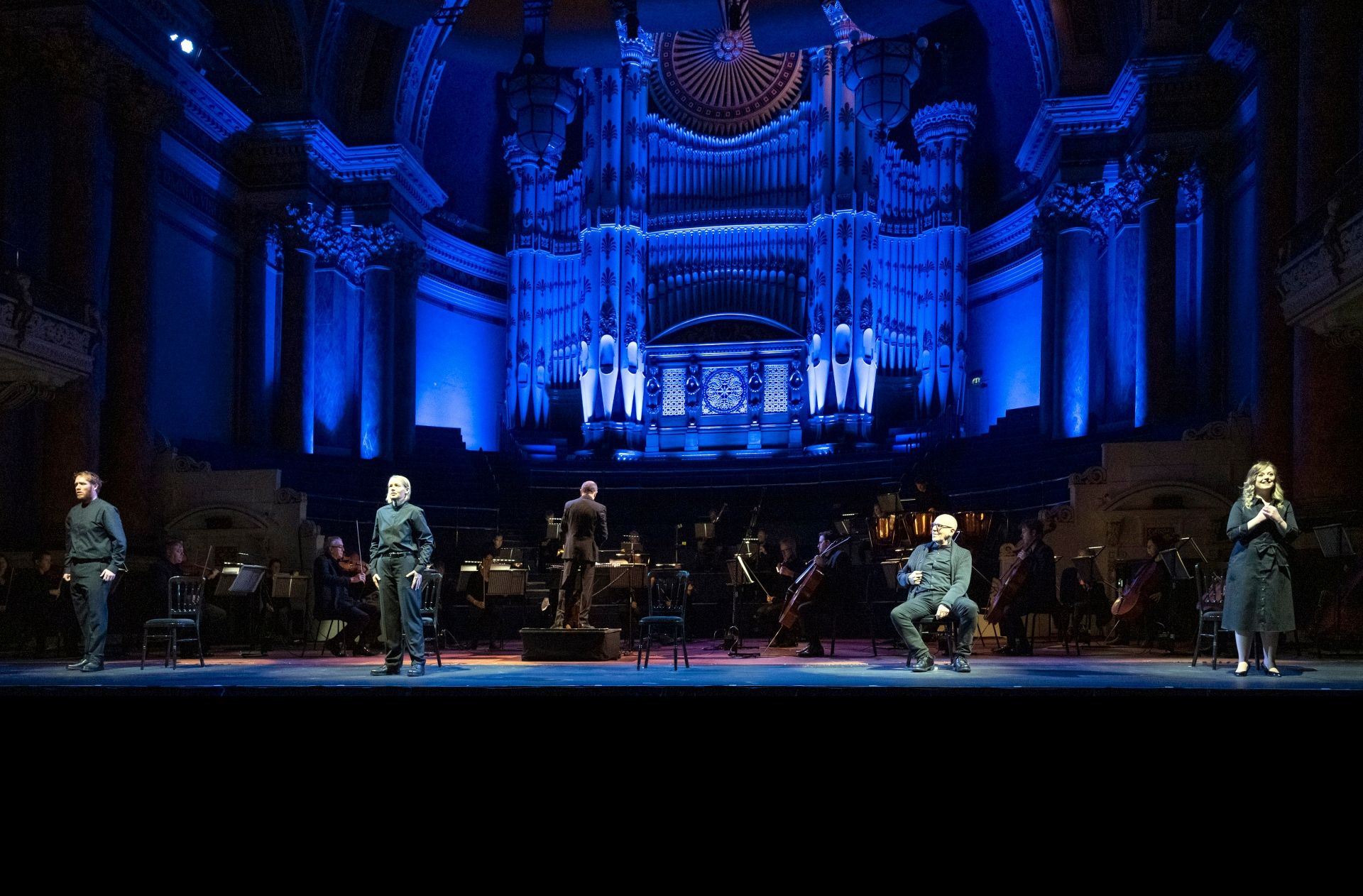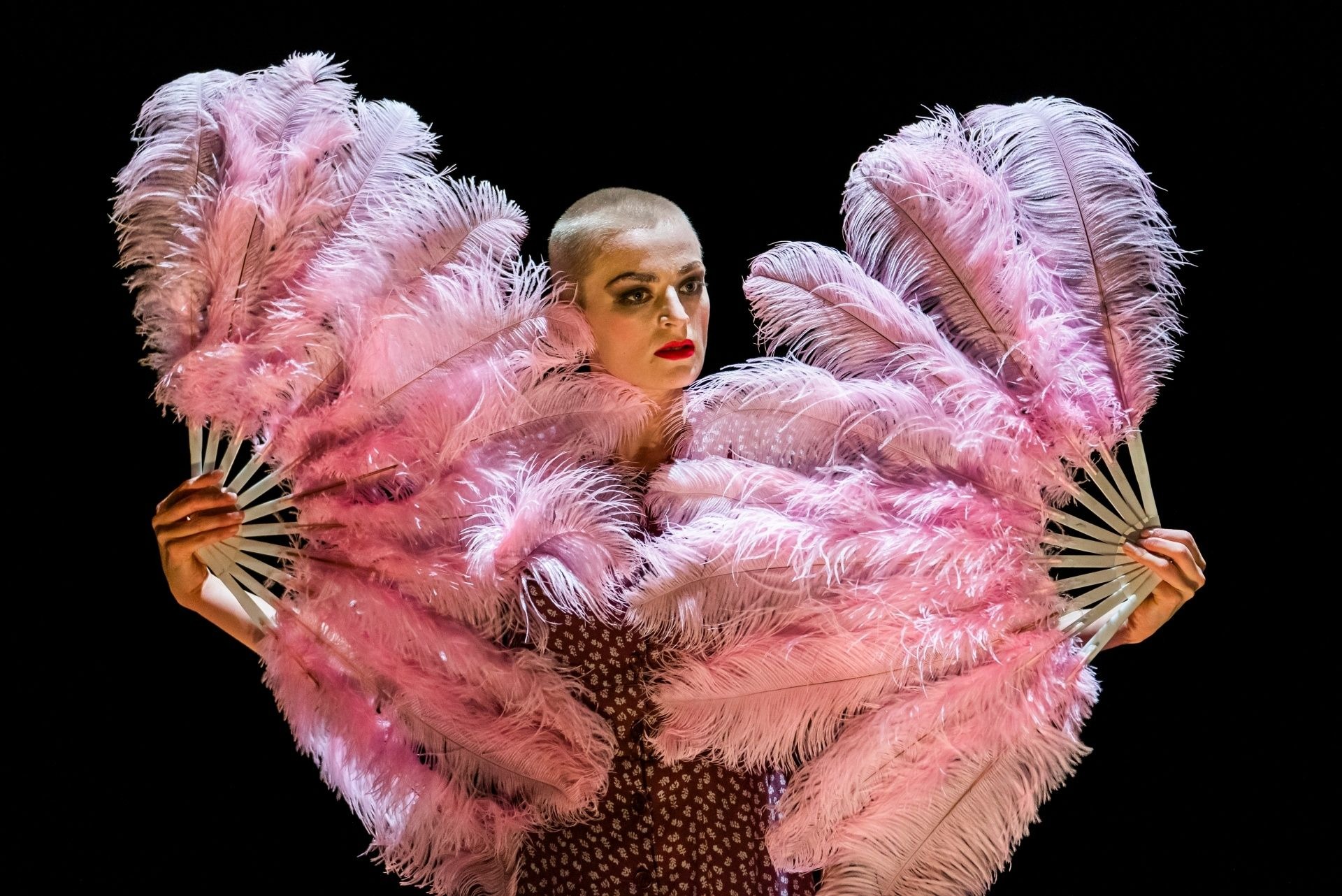A great Leeds tradition develops in new and exciting ways, and continues to excel at what first made it great.
You may have noticed a few pianos around Leeds—in the Corn Exchange, the train station, the Merrion and Trinity Centres, the University of Leeds’ Parkinson Building. These were supplied (by the wonderful Besbrode Pianos) as part of the celebration of all things pianistic that is Leeds’ Piano Competition.
The competition was started in 1963 by the great Dame Fanny Waterman along with the Duke and Duchess of Harewood. It is a triennial competition which gathers some of the ablest young pianists in the world and gives a prestigious and generous start to the careers of many of these competitors; it also puts Leeds distinctly on the map for the world of Classical piano!
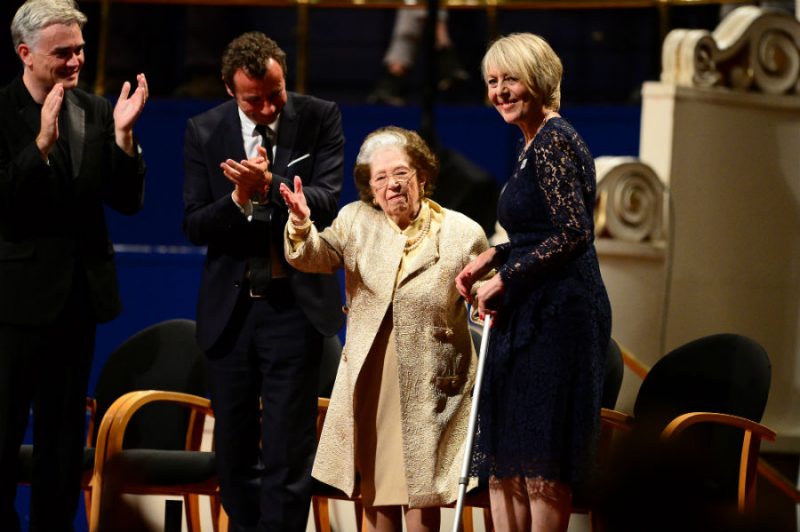
This year ‘the Leeds’, as it is colloquially known, has really focused on developing its engagement with the wider City, leaving the ivory tower in order to bring the joy of piano music to many (hence the pianos one sees around town). There have been wonderful events throughout the festival (since a festival is what it really is beginning to be): masterclasses in piano and violin, lectures (by such luminaries as Alfred Brendel), interviews and conversations with such other luminaries as Alistair MacGowan and Ed Balls, and so on.
The Cobbe Collection
But surely the most extraordinary of the ancillary events (and brand new this year) was the visit of the Cobbe Collection from Hatchlands Park in Surrey. The collection boasts the widest range of composers’ instruments anywhere. It includes Charles II’s virginals (a harpsichord-like instrument from the seventeenth century), which were probably worked on and played by the great Henry Purcell; the piano of Johann Christian Bach (not his more famous father Johann Sebastian) which Mozart probably played whilst visiting him in London, and on which his great A Minor Sonata, K. 310, which had just been written, was probably premiered; the piano of Marie-Antoinette (who composed for the piano herself, although likely none of her music survives); and the pianos of Mahler and Elgar.
Not all of the above made it to Leeds of course, and we had but some eight pianos and a clavichord. Still this hardly slight number was more than enough to look at and wonder over in the time allotted. (Greater time-allotment for the next visit perhaps, Cobbe Collection?) But perhaps most wonderfully for a Haydn-lover (as I am) was the grand piano which Haydn himself used during his visits to London and which he even took back with him to Germany! It was also a wonder to hear one of Chopin’s Pleyel pianos.
Other highlights were hearing some of the music of Bach performed on a clavichord (a wonderful instrument which Bach himself is said to have admired for its expressive range); hearing the awe-inspiring final sonata of Schubert, D. 960, on a Walter piano (c. 1815, Vienna), one of whose pianos Schubert owned and probably wrote and performed the sonata on; hearing more wonderful Bach (from WTC I) on a very early, clavichord-like piano; and hearing, seeing and learning about the curiosities and eccentricities which piano-makers have incorporated into the instruments over the years and how composers have exploited these.
A particularly touching highlight was hearing Schubert’s D. 960 on a true una corda (one string, rather than multiple as on modern pianos), creating a whispering, beautiful and unearthly sound, especially in the upper register.
My huge thanks to the Cobbe Collection for the wonderful, sensitive playing, and the enthusiastic and lively talk.
www.cobbecollection.co.uk
Final
Another way in which the competition has stretched its wings this year is in its use of live-streaming. For the many who wanted a ticket but could not get one, or who could not be in Leeds, etc., etc., there were two new options: one could now either watch the live stream on medici.tv, or, if in Leeds, go to Millennium Square and watch the final for free on the big screen. I did the latter. However, for the next competition in three years’ time, I will remember how cold it can get, even just in mid-September, after sunset. This aggrieved me all the more when, on the live screen, I saw many empty seats in the supposedly sold-out concert hall!
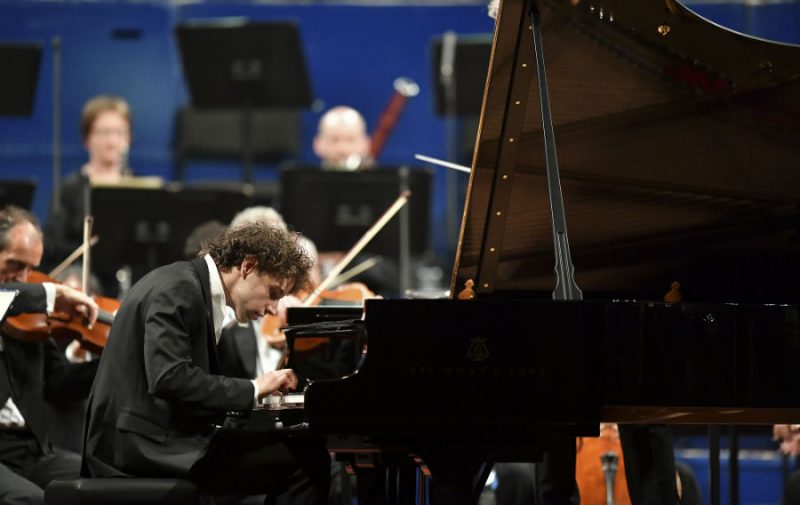
But on to the music: The soloists were accompanied by the Hallé Orchestra, and conducted by Edward Gardner—as wonderful a backing band as one could hope for! The first contestant was Alijoša Jurinić, playing Mozart’s Piano Concerto #24 in C Minor, K. 491. Although the performance pumped through the speakers on the big screen of course allowed for little of the niceties of the performance as it would have sounded in the hall, I nonetheless was able to glean a sense of how it and the others might have been. Of Jurinić’s playing I can fairly say that there was sensitivity aplenty, and that a highlight was the warmth of his staccato. It was a great shame that the middle movement, in which Mozart’s Piano Concerti often excel, was ruined by the flying overhead of the Yorkshire Air Ambulance helicopter. Given the crucial, life-saving work of this service, The Competition might consider a better location in 2021.
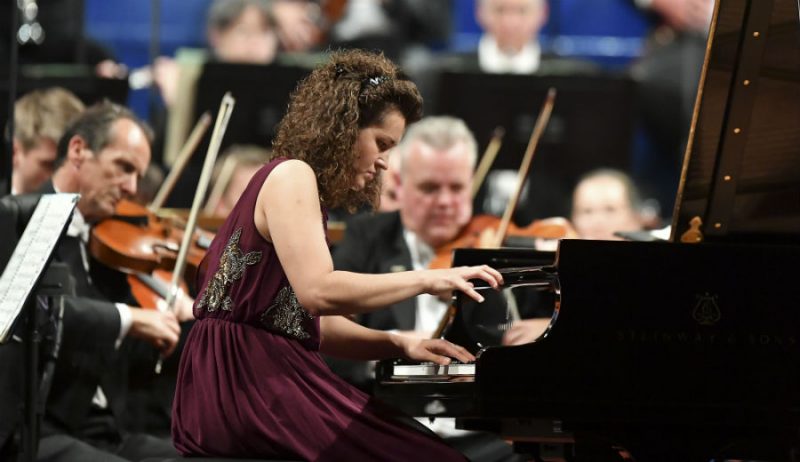
The next performer was a twenty-seven-year-old Russian pianist, Anna Geniushene. Is the clue in the surname? I can’t be sure, since I was spoken to by virtually everyone in Leeds during her performance—one of the downsides of attending one’s concerts in the great outdoors. Added to this was the fact that, reflecting that she was my age, and about twenty-seven years more advanced in the study of the piano than me, I could not help but find that some seething envy on my part affected my enjoyment of her performance, too. Still, from what I glimpsed of her playing, she was a passionate and highly virtuosic performer, choosing a terrifying Prokofiev Concerto and playing it with confidence and brilliance. She was given to some odd expressions in the form of her bodily and facial movements; but, since many musicians have built a career on such displays, this can be excused.

After diving into the Cuthbert Brodrick for the interval (in order not to freeze to death), Mario Häring, a twenty-eight-year-old German (with an Italian forename?) pianist closed the evening with Beethoven’s first Piano Concerto—an excellent choice. Häring boasted a wonderful sensitivity which suited the classical-period repertoire at which—looking at his record of performances—he seems to excel (though I also found a video of him tearing up the keyboard with a twentieth-century, light-fingered virtuoso piece). His piano seemed truly transformed into a little orchestra; I was very impressed with Häring, and he gets my vote!
Still, I ought to add, there remain two performances to be heard tonight from Xinyuan Wang, and Eric Lu, which unfortunately I cannot stay to enjoy. Then it will be so much for Leeds International Piano Competition for another three years. It was wonderful to see such a development of the extra events this year, and I hope that the Competition-volunteer I spoke with was right when she said that the events would be weighted more towards weekends next time, so that people with jobs, etc., may actually have a chance of witnessing some of them.
Photographs by Simon Wilkinson, provided by Albion Media
leedspiano.com
Venues
Leeds Town Hall: leedstownhall.co.uk
Leeds University Great Hall: leeds.ac.uk

